Safe with public Wi-Fi networks
Network administration - Nothing is private with an open Wi-Fi network, but you can still use a number of ways to increase security, which can be warnings to avoid, maybe Technical measures to help protect you are safer.
Nothing is secret in an open Wi-Fi
Today most users who have a bit of computer knowledge know how (and why) to protect their home wireless routers. Windows 7 and Vista now have a dialog box to alert when users connect to unencrypted wireless networks.
In cafes, lounges at the airport or library, users can connect without much hesitation if using an unencrypted wireless connection just to check the result of a match or status ergonomics of flight may be acceptable. However, if you use such a connection to read email or perform some actions on the web that require login, it is an unacceptable action.
So why don't all businesses encrypt their Wi-Fi networks? The answer lies in the key distribution system according to IEEE 802.11 specifications: To encrypt network traffic, network owners or managers need to choose a password, this password is also known as 'network key'. . This new standard requires each password for each network, this password is shared with all users if the owner has chosen a security level that is less secure, which is an outdated WEP standard without standard selection. WPA is more secure or WPA2.
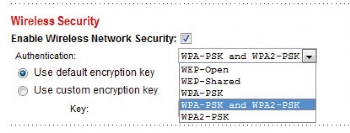
At home, all the user has to do is set up once, then notify family members password, then you can surf the web using wireless network anywhere in the home without having to worry much about safety. However, in the coffee shop, the shop's staff will have to instruct each customer the wireless network's password and may even have to troubleshoot the connection - obviously it's not a small thing that employees in the bar will enjoy. In this situation, make sure a blank password for ease of use will be selected.
Although even with an encrypted network, you cannot be absolutely secure. When your computer knows the password, the communication will only be safe for people who are not on the network; all other customers in the coffee shop can see your traffic because they also use the same password you are using.
Personal work is a competitor's job
What if you think your data is not important for someone to look at? Maybe you just browse the web, do not log in to email systems or web applications that require passwords. Then are you sure you are safe? Not really.
Imagine you are in an airport Wi-Fi network while returning from a product presentation. Instead of checking hundreds of emails waiting, you can only decide to browse the competitor's website, to search for other ideas or perhaps decide to study the goals to be achieved.
However, in the background , your email client still finds an Internet connection and downloads the email. Your colleague at the headquarters office sees your IM status displayed as 'online' and sends you a message with confidential content.
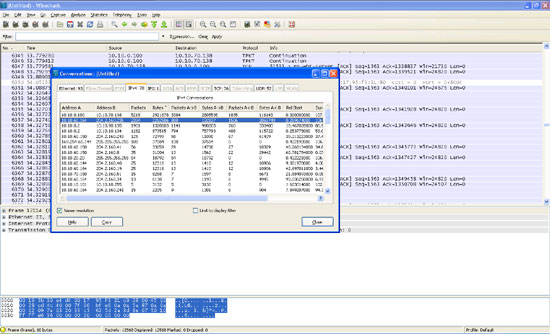
There is no need for complicated equipment other than a software that can analyze wireless data packets, an attacker near you can glean competitive intelligence based on the websites you visit and also IM or notes reflect issues about your relationship with important partners. In short, other people will be able to read your mail first, even if you don't take any action.
Use SSL for Webmail
First, to cope with mail snooping, use a Webmail system that uses HTTPS protocol throughout the session. Most Webmail systems today use HTTPS when requesting you to log in, so your password will be transmitted securely. However, after authentication, they are often transferred back to the HTTP protocol to reduce the load that must be processed on the servers and perform some other action.
That means that someone on the same wireless network (either unencrypted or with a shared password) can read the contents of your email. In some cases, they can steal session cookies and log into your Webmail session without a password.
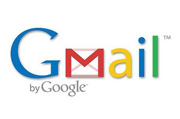 Two notable exceptions are Gmail and your corporate email system (such as Outlook Web Access). Earlier last year, Gmail switched from using HTTPS only when signing in to use HTTPS throughout the Webmail transaction process.
Two notable exceptions are Gmail and your corporate email system (such as Outlook Web Access). Earlier last year, Gmail switched from using HTTPS only when signing in to use HTTPS throughout the Webmail transaction process.Previously, Google Apps users can also select this feature, but it is currently set by default but still has the ability to choose (in case someone doesn't like security). This change, combined with Google's new suspicious login detection algorithm, makes Gmail a better provider than other free Webmail competitors. If you're looking for a reason to switch from your AOL, Hotmail, or Yahoo accounts, you've found it.
Your company's Webmail system can also be protected by HTTPS at the whole transaction process, this is the default configuration for most systems. However, if you check email for your work using internal software (Outlook, Thunderbird, Mac OS X's Mail) instead of HTTPS Web-based e-mail, then you can or not use encryption.
Charged Hotspots: Not necessarily safe
While researching to write this article, we have found a misconception that we still have before that, commercial hotspots require an hourly or monthly fee (like AT&T, Boingo, GoGo, T-Mobile) will be safer than free hotspots because they use passwords and charges.
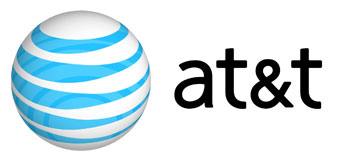
However, in fact, these hotspots are almost unencrypted and they use what is called "captive portal" that only blocks Internet access until you enter the user password. Although this portal is usually distributed via HTTPS (to protect credit card information or passwords), all authenticated traffic is not encrypted in the wireless network.
As a result, you have to pay a fee with a very low level but really not safe. In fact, due to the inherent nature of radio wave propagation, someone, whether or not a subscriber, can still view the unencrypted traffic you send by simply joining Wireless network with SSID.
It also means that outsiders can easily observe and capture the HTTP Websites you access, any unencrypted POP3 e-mail, or the FTP data transfer you make. Hackers with a bit of experience can even change their wireless cards to fake your wireless card identity and can access it for free through a commercial hotspot where you are subject to payment. charge.
Use your VPN
If the company provides a VPN (virtual private network) connection to access the Internet, you should use this function when accessing the Internet from Wi-Fi hotspots that are registered or free. By enabling the VPN function on your laptop, you will ensure all your communications are high-level encrypted and tunneled from Wi-Fi hotspots, via the Internet to your company's data center, where it is. decoded and sent to the company's Internet connection.
This is a safe method for accessing company resources (intranet, email, database) because you will have a separate tunnel to connect to your company. In some VPN configurations of many companies, you can browse the Internet to access company resources.
Such a technique may be slower than a little unencrypted web browsing, but the security you have is an important issue.
If the company does not provide VPN services or has a " split tunneling " VPN (where only requests sent to company resources go through encrypted tunnels, all other traffic is transmitted without code. Directly to the destination), no worries because you can still be protected safely.
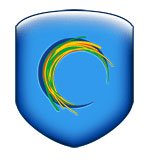 Try HotSpot Shield, AnchorFree's VPN service. This is a company that provides VPN software that you can install on your laptop in advance for use at public Wi-Fi hotspots.
Try HotSpot Shield, AnchorFree's VPN service. This is a company that provides VPN software that you can install on your laptop in advance for use at public Wi-Fi hotspots.
When activating software and services, it encrypts your traffic and sends it through a tunnel to the HotSpot Shield data center, then sends it to the Internet, just like a company's VPN server is still perform. HotSpot Shield even has mobile VPN settings (no download required) to protect your web surfing on iPhone phones with the bundled Cisco VPN client software provided by Apple.
By using such a service, you can create a secure connection. Your traffic will then be sent as unencrypted to the final destination on the Internet, as if you were browsing from a laptop plugged directly into the corporate data center.
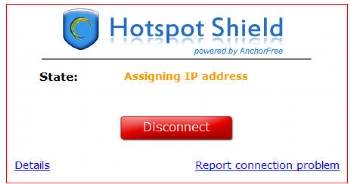
This method does not guarantee absolute security because the encryption tunnel is not able to control all the ways you access the web. Even so, it is definitely more secure than a non-VPN setting.
Summary of safe Wi-Fi access
Can be summarized as follows:
1. If your company has a VPN that you can use to surf the web, use it.
2. If you can't use a corporate VPN, use HotSpot Shield instead
3. Don't equate to Wi-Fi Internet subscription for a fee with secure browsing.
4. On unencrypted wireless networks, anyone can see where you are visiting (except on HTTPS websites).
5. On encrypted wireless networks, anyone with a password can see where you are visiting (maybe some people in your home or maybe hundreds of people at the airport).
You should read it
- How to use the public USB charging port safely?
- Growth is booming, reaching $ 38 billion but Zoom is facing security and privacy concerns
- 5 simple steps to help increase safety and security of Windows 10
- Learn about Public IP address
- 6 security threats Android users will face in 2023
- What is Privacy Dashboard on Android 12? Why can it be considered a 'breakthrough' in terms of privacy?
- Change the following 7 iOS settings to better Safari security
- Privacy practices on Google Chrome
May be interested
- What is Jacking Juice? Why shouldn't the phone be charged in a public place?
 public battery charging kiosks can make you a victim of hackers who want to collect your personal information and benefit from that information.
public battery charging kiosks can make you a victim of hackers who want to collect your personal information and benefit from that information. - 9 things you should never do when using public WiFi
 the best way to stay safe when using public wifi is to avoid doing anything that might give hackers what they're looking for.
the best way to stay safe when using public wifi is to avoid doing anything that might give hackers what they're looking for. - Password protection when using public computers
 receiving and sending e-mails or conducting banking transactions on computers at hotels, libraries and public places is convenient, but sometimes it's not safe for your passwords because they are easy to steal. . to avoid n & a case
receiving and sending e-mails or conducting banking transactions on computers at hotels, libraries and public places is convenient, but sometimes it's not safe for your passwords because they are easy to steal. . to avoid n & a case - 8 basic principles when using a public PC
 using public computers in libraries, internet cafes, internet access points ... is very fast, cheap and convenient. but are these computers really safe?
using public computers in libraries, internet cafes, internet access points ... is very fast, cheap and convenient. but are these computers really safe? - Securely protect information on Wi-Fi network
 wi-fi networks are not yet a safe environment. on private networks, users can enable secure encryption to prevent illegal users from connecting and capturing traffic. however, depending on the security method used, user data can still be stolen. and
wi-fi networks are not yet a safe environment. on private networks, users can enable secure encryption to prevent illegal users from connecting and capturing traffic. however, depending on the security method used, user data can still be stolen. and - Is it safe to use Discord?
 social networks are underrated when it comes to security and privacy. but discord is a lot more secure and private than facebook.
social networks are underrated when it comes to security and privacy. but discord is a lot more secure and private than facebook. - Safety rules when using public WiFi
 many people have been confidently using wifi networks in airports, cafes and hotels for years, but only if they follow the following safety rules.
many people have been confidently using wifi networks in airports, cafes and hotels for years, but only if they follow the following safety rules. - Threads are safe? Here's everything you need to know!
 the first social networks appeared in the late 1990s, and many options have appeared and disappeared since then. few applications like twitter, have had such a major impact on our society, fueling social and political movements across the globe.
the first social networks appeared in the late 1990s, and many options have appeared and disappeared since then. few applications like twitter, have had such a major impact on our society, fueling social and political movements across the globe. - Download and experience iOS 11.4 Public beta is more stable than Developer version, and has AirPlay 2
 immediately after the release of ios 11.4 beta for developers, apple has released a version for users who are participating in public beta.
immediately after the release of ios 11.4 beta for developers, apple has released a version for users who are participating in public beta. - How to 'convert' from the iOS Public Beta version to the old version
 after the developer version, ios 10 was released by public beta, which ordinary users can download and install. if you are trying the public beta version, you will experience some really exciting new features.
after the developer version, ios 10 was released by public beta, which ordinary users can download and install. if you are trying the public beta version, you will experience some really exciting new features.










 Adobe patched 18 vulnerabilities in the Shockwave Player application
Adobe patched 18 vulnerabilities in the Shockwave Player application Delete your tracks on the web
Delete your tracks on the web 5 applications to secure Wi-Fi Hotspot connections
5 applications to secure Wi-Fi Hotspot connections 5 issues for enterprise security
5 issues for enterprise security Secure multi-platform network system
Secure multi-platform network system Configuring Hyper-V security with Authorization Manager
Configuring Hyper-V security with Authorization Manager